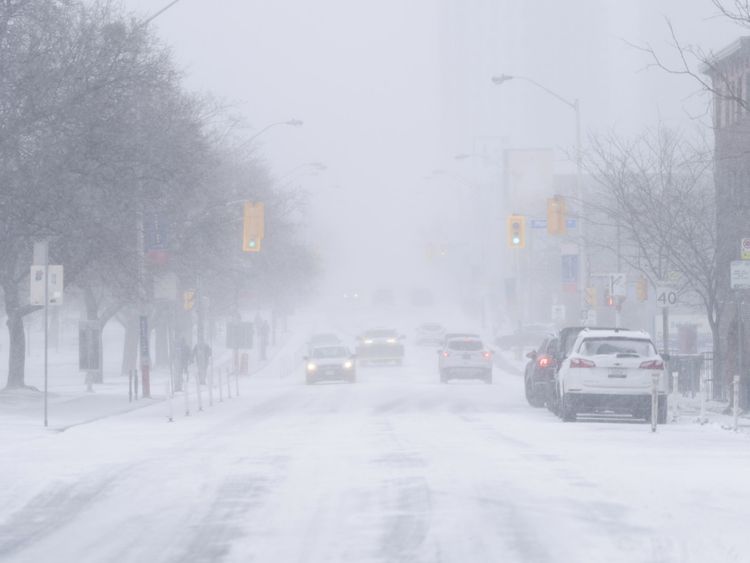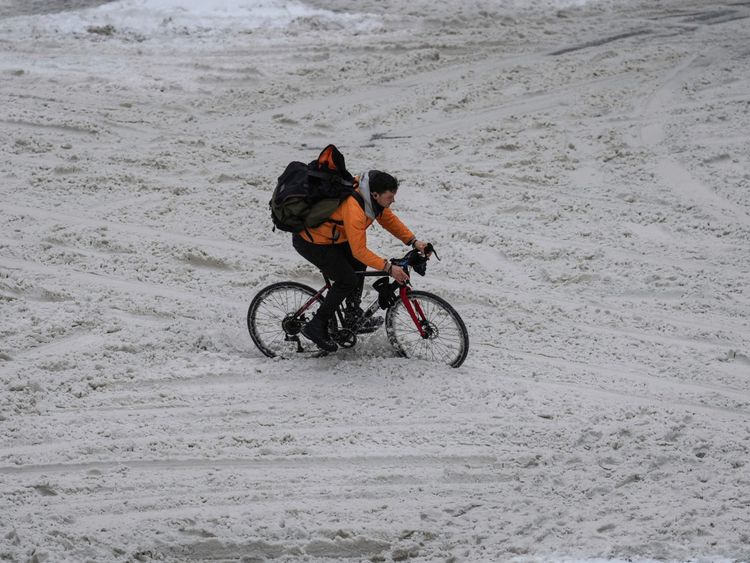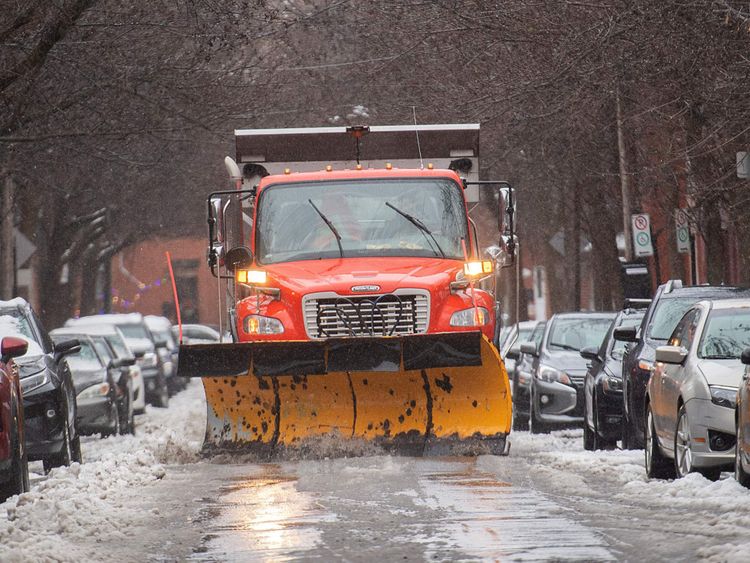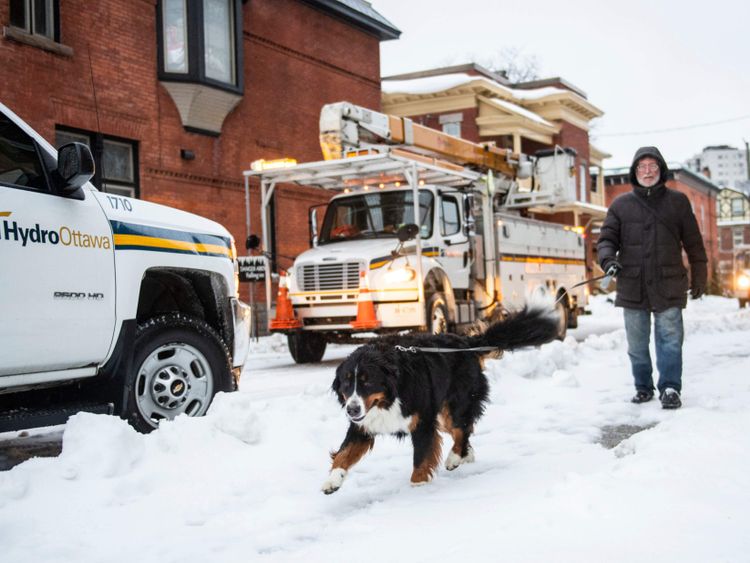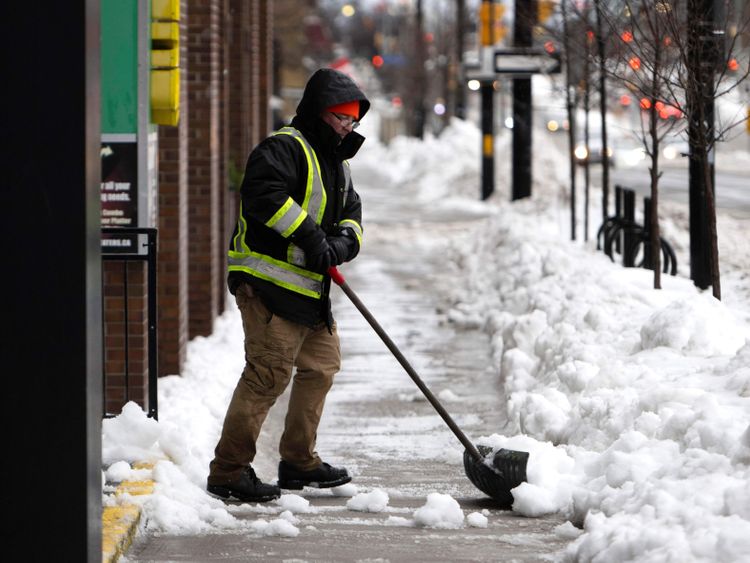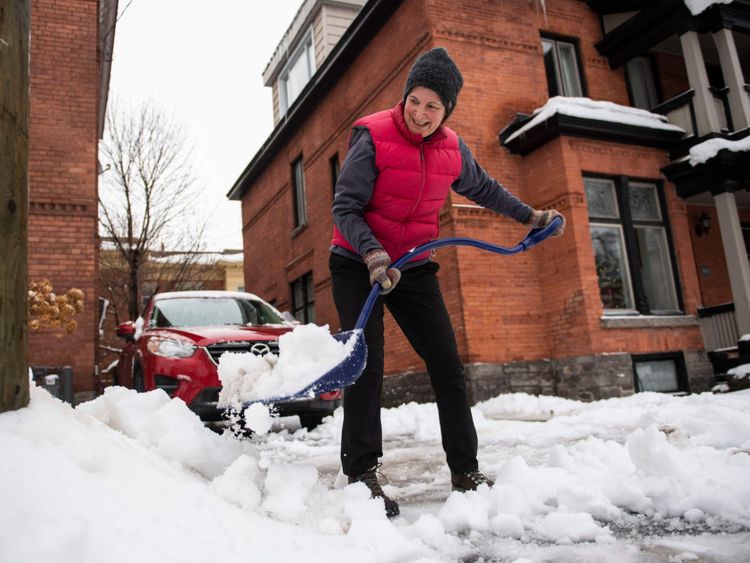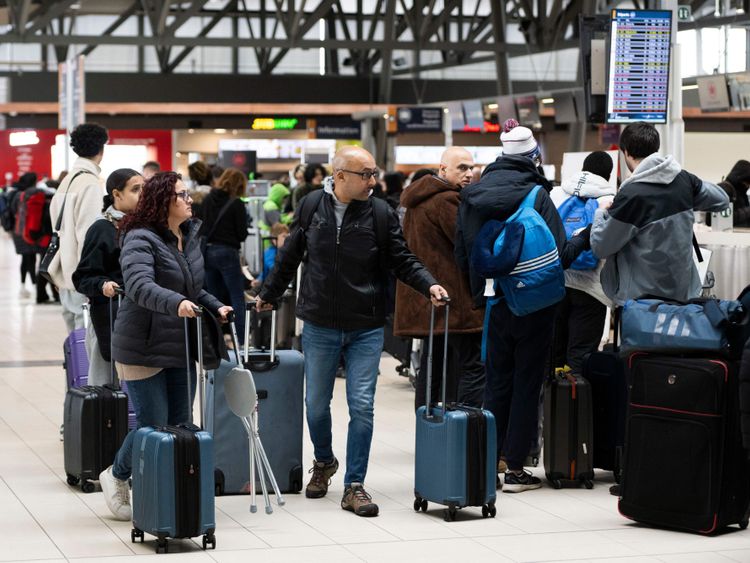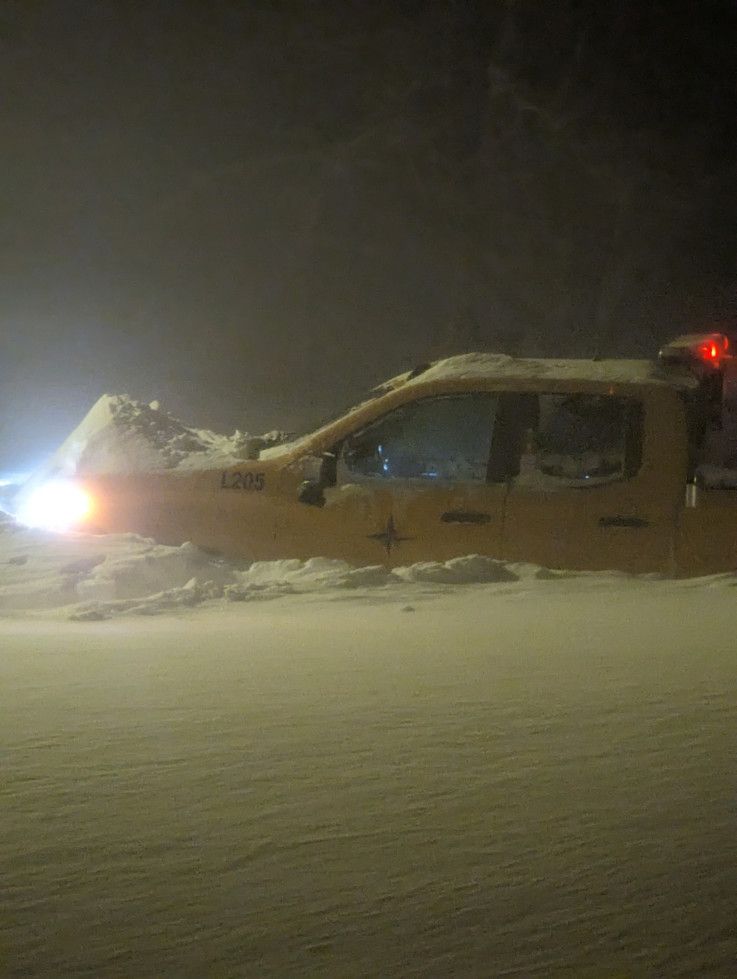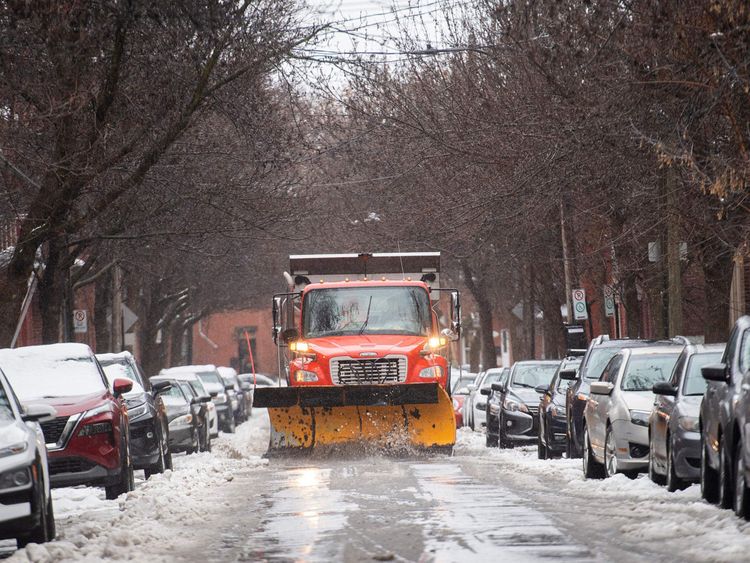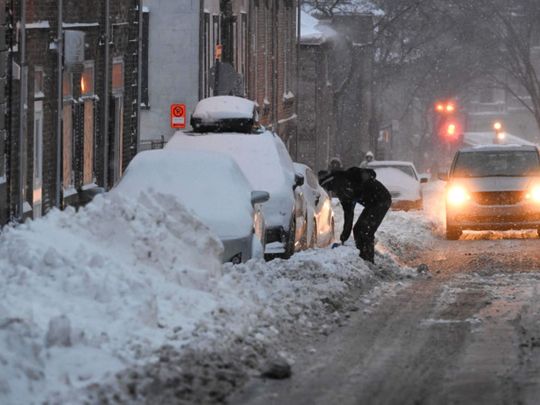
- 48 dead so far in the US, and 17 in Japan due to heavy snow while 4 people died as bus rolled over in Canada.
- A ban on road travel imposed in since Friday; many motorists were stranded in their vehicles in blinding white-out conditions that hinder rescue operations.
- 1,700 more US flights cancelled.
The death toll from a pre-Christmas blizzard that paralysed the Buffalo area and much of the country has risen to 27 in western New York, authorities said, as the US death toll from the storm rises to at least 48.
Road and utility crews faced the task on Monday of digging out and restoring some normalcy around Buffalo, where a blizzard considered the area’s worst in 45 years buried snow plows, stranded motorists in cars.
The lethal blizzard took form late on Friday and pummeled western New York through the Christmas holiday weekend, capping an Arctic freeze and winter storm front that had extended over most of the United States for days, as far south as the Mexican border.
48 killed in the US
In the US, at least 48 people have died in weather-related incidents since late last week, according to the latest AP tally. The greater Buffalo region, lying at the edge of Lake Erie near the Canadian border was one of the hardest-hit places.
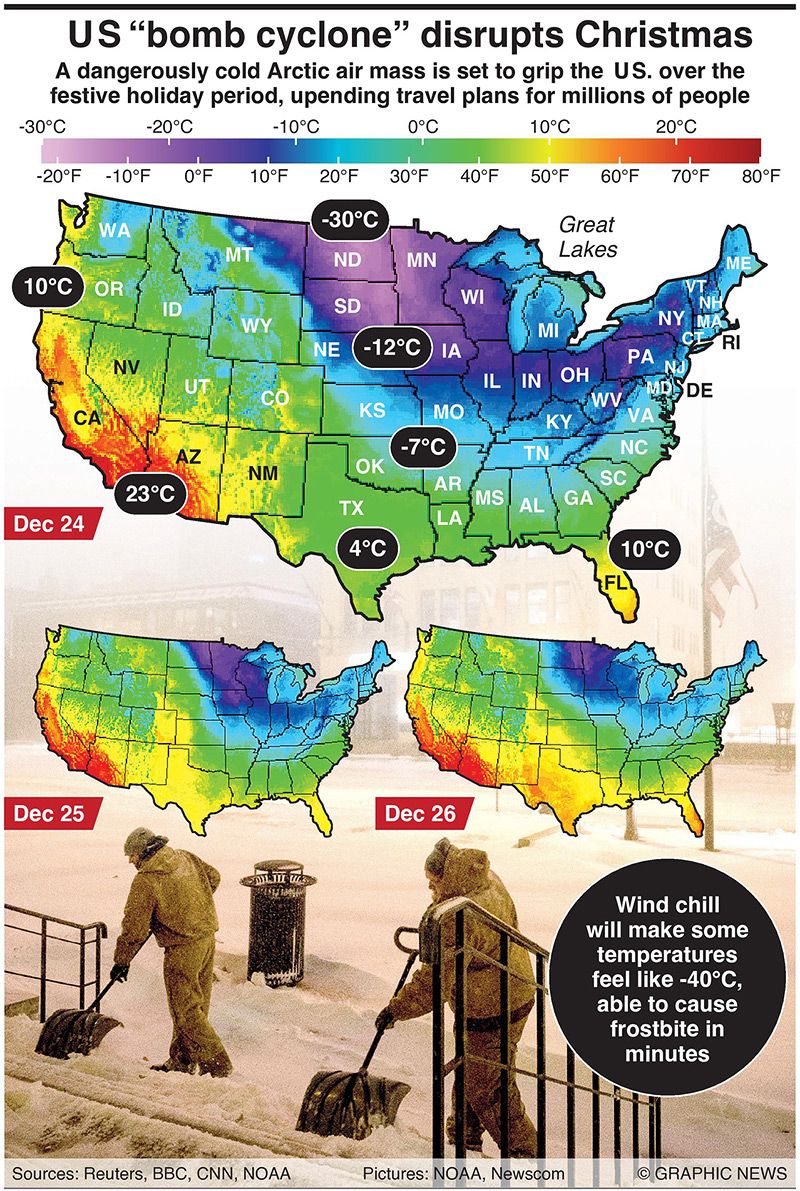
Numbing cold combined with howling winds and heavy “lake-effect” snow — the result of moisture picked up by frigid air moving over warmer lake waters — produced a storm that Governor Kathy Hochul said would go down in history as “the Blizzard of ’22.”
Buffalo, New York, the the epicenter of the crisis, has been buried under staggering amounts of snow, with the National Weather Service forecasting up to 14 inches (0.35 meters) Monday — in addition to the several feet that have already left the city marooned, with a virtual collapse of emergency services.
The governor called the bomb cyclone as an “epic, once-in-a-lifetime” weather disaster that ranked as the fiercest winter storm to hit Buffalo, New York state’s second-largest city, since a crippling 1977 blizzard that killed nearly 30 people.
The latest blizzard, which initially overwhelmed emergency crews, came nearly six weeks after a record-setting but shorter-lived lake-effect storm struck western New York.
1,700 more US flights cancelled
An additional 1,700 flights were cancelled on Monday due to extreme weather, bring the total to 15,000 flights cancelled in recent days, according to tracking site Flightaware.com.
Wind swirls in at the storm's base as the air rises. As long as the air at the top of the storm rises faster than it can be replaced at the bottom, barometric pressure will fall. Lower air pressure, like a hurricane, results in a stronger storm.
While not all bomb cyclones are hurricanes, they can sometimes take on characteristics that make them look eerily similar to hurricanes, with very little warning, explained UCLA climate scientist Daniel Swain.
Rescuing the rescuers
Despite a ban on road travel imposed since Friday, hundreds of Erie County motorists were stranded in their vehicles over the weekend, with National Guard troops mobilised to help with rescues hindered by blinding white-out conditions.
Authorities were expected to decide Monday morning whether to extend the ban.
County Chief Executive Mark Poloncarz told reporters that snow drifts as high as 8 feet on roadways were too thick and heavy to clear with conventional snow-removal equipment.
Many snow plows, tow trucks, ambulances and other emergency vehicles dispatched on Saturday and Sunday became stuck in the snow, “and we had to send rescue missions to rescue the rescuers,” he said.
The Buffalo police department posted an online plea to the public for assistance, asking those who “have a snow mobile and are willing to help” to call a hotline for instructions.
15,000 homes without power
Although power had been restored to most Erie County utility customers, as of Sunday evening about 15,000 homes remained without electricity, according to Poloncarz.
He said one electrical substation knocked offline was sealed off by an 18-foot-tall mound of snow, and utility crews found the entire facility frozen inside.
At the request of state officials, Hochul said, local power companies had pre-positioned some 7,000 utility workers ahead of the storm on Friday, but blinding, drifting snow had made it difficult for crews to reach stricken equipment.
Snow-clogged roads stall access
Efforts to clear snow-clogged roads were likewise stymied. “It is not a matter of resources — bodies and equipment — it is a matter of mobility and access,” Hochul said.
Hochul told reporters on Sunday that the Biden administration had agreed to support her request for a federal disaster declaration and she expected formal approval shortly.
While the official blizzard warning for the greater Buffalo region was lifted on Sunday, officials warned that blizzard-like conditions persisted in some areas, and that more snow was in the forecast through Tuesday.
17 dead in days of heavy snow in Japan
Heavy snowfall across large parts of Japan has killed 17 people over the last 10 days, with thousands of homes suffering power outages, Japanese officials said Monday.
Much of the country’s west coast as well as the northern region of Hokkaido have seen persistent heavy snow in recent days.
Some areas have seen almost a metre of snowfall in 24 hours, including the town of Oguni in northeastern Yamagata region, local media said.
Japan’s weather agency has warned residents in the affected regions to avoid travel where possible, after cars got stuck on roads in heavy snow.
Government officials said Monday that 17 people have been killed and dozens more injured in the snow since December 17.
National broadcaster NHK reported the dead included a man who fell from a roof while clearing snow and a woman found dead of suspected carbon monoxide poisoning in a car.
4 dead as Canada bus rolls over
Four people have died and dozens more were injured after a passenger bus rolled over in western Canada, with authorities saying Sunday that icy roads were likely the cause.
The accident occurred Saturday evening on a highway some 330 kilometers (200 miles) east of Vancouver in an area of British Columbia hit by days of bad winter weather.
Federal police said Sunday afternoon they suspected “extremely icy road conditions” caused the rollover, but that the investigation was ongoing.
“Four people are confirmed deceased and multiple people have sustained injuries,” the police statement added.
The regional health authority said that fifty-three people in total had been treated at hospitals after the accident, with 36 having “serious to minor” injuries. As of Sunday morning, eight people were still hospitalised, including two in critical condition. A portion of the highway impacted by the crash was closed into Sunday morning, provincial transportation authorities tweeted.
Meanwhile, tains between Ottawa and Toronto were disrupted throughout the day on Saturday and Sunday due to downed trees and power outages caused by a massive winter storm.
“Please check your businesses and churches for leaks and broken pipes, as these add up tremendously and only worsen the problem,” the city said in a statement, adding: “We understand the timing is terrible.”
The problems come months after the water system in Jackson — the state capital with about 150,000 residents — partially collapsed.
Most of Jackson lost running water for several days in late August after flooding exacerbated longstanding problems in one of two water treatment plants. Residents had to wait in lines for water to drink, cook, bathe and flush toilets.
Along with the December 25 order to boil drinking water, city officials said some residents also have reported low water pressure or no water pressure. The city’s water system saw “fluctuating” pressure beginning on Saturday amid frigid temperatures.
The Christmas Day announcement said crews were working to make repairs, but it did not give an estimate on how long the disruption might last.
(With inputs from Reuters, AP, AFP)



